Imagining a Social Media App tailored for tight-knit groups.

Social media apps used to work for smaller groups, but competitive friend counts, addictive content, and other problems make sharing a bit of a chore. This project imagines an alternative that supports sharing amongst close friends and family.
SOLVING PROBLEMS
I quit social media.
(Well... ok, with the exception of YouTube). It's certainly a lot more freeing away from clickbait and the barrage of friend requests from total strangers-- but, I do lose out on the whole purpose of social media: sharing funny cat memes with buddies. So, to start the design journey, I made note of some of the qualities, and issues, of popular social media platforms.

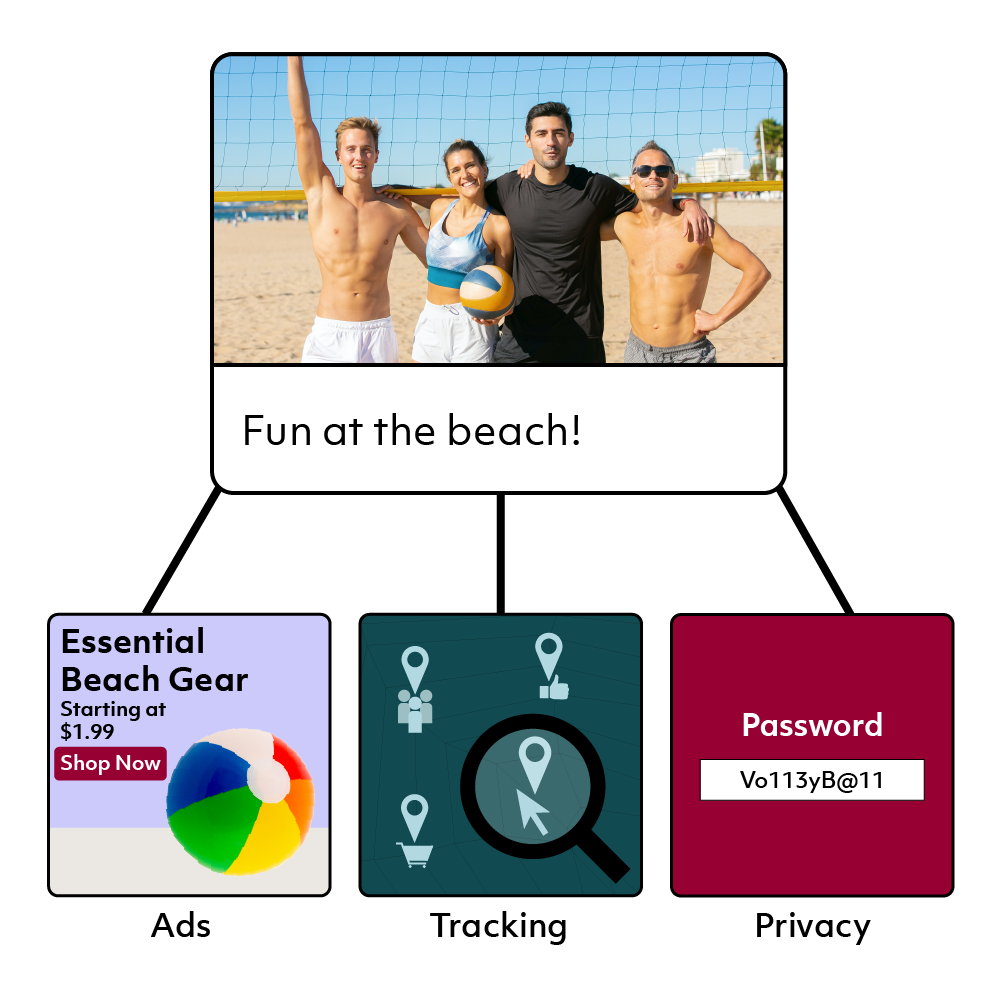
Data and Privacy
Data can be used to improve privacy or breach it. Users generally want to have more privacy, and many don't like the idea of scammers, hackers, or advertisers getting a hold of information from pictures, posts and likes. However, some algorithms could be used for the benefit of users, preventing cyberbullying, spamming, trolling, and general misuse of the platform.
Influencers and Ads
Companies and influencers dominate social media, turning community-centered content into ads and trends. To prevent the corporate takeover in a friends/family application, restrictions need to be made, such as capping the amount of friends a user can have, or making the friend request process a bit more involved. Ads may be needed to fund the app, so it's important to make them as unobtrusive as possible.

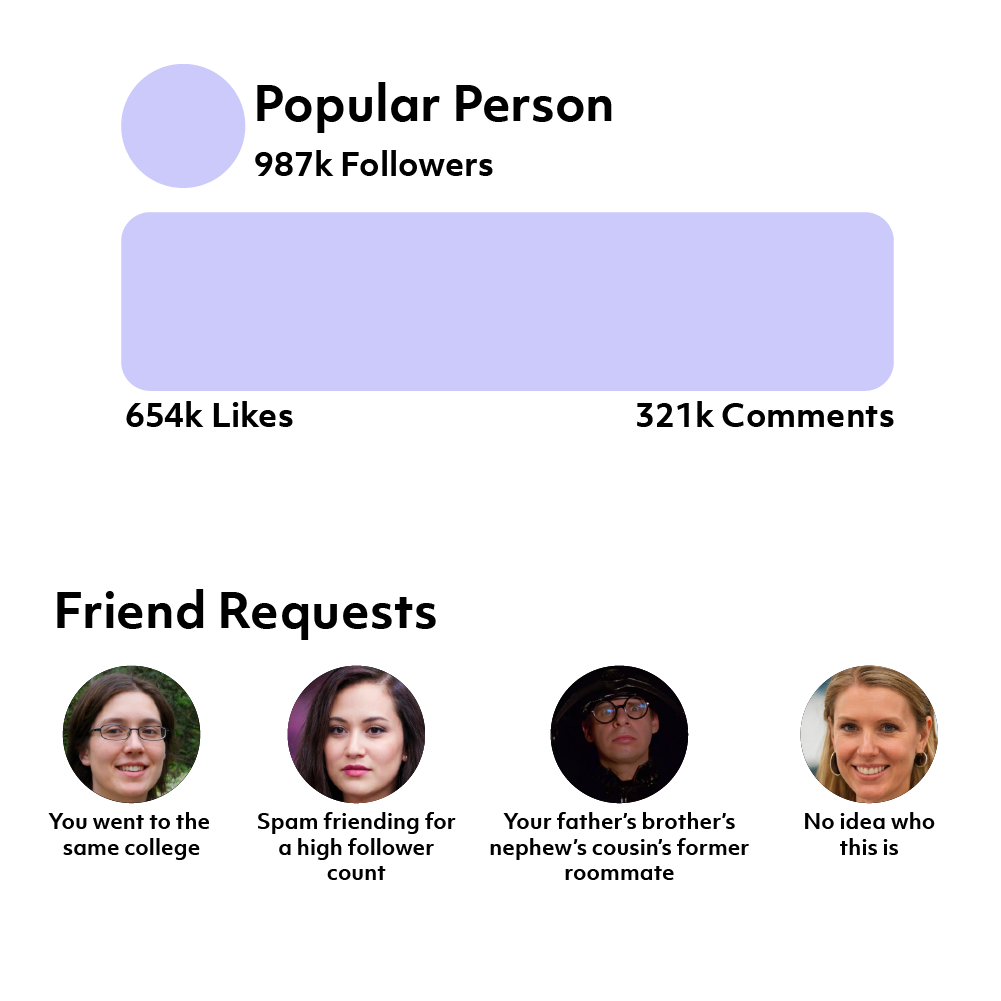
Competition and Mental Health
Along with influencer culture is the desire for fame and relevance, ultimately taking a toll on mental health. FOMO, depression, and dependence on likes and followers don't contribute to a fun experience on social media.
One solution is to remove the friend count. Along with making the friend request process a bit more involved, this ensures that the user's feed can at least be from genuine relationships.
Addiction and Wasting Time
Internet addiction is absolutely real; in 2022, the daily average time per person on social media was almost 2.5 hours1. Part of me quitting social media was realizing I was wasting time by being disappointed. Similar to gambling, there's a hunger for the right content, or 'win', but it's usually surrounded by too many losses2. Media shared from just friends should help reduce the addictiveness of the app.
1How much time does the average person spend on social media?
2Social media copies gambling methods to create 'psychological cravings'
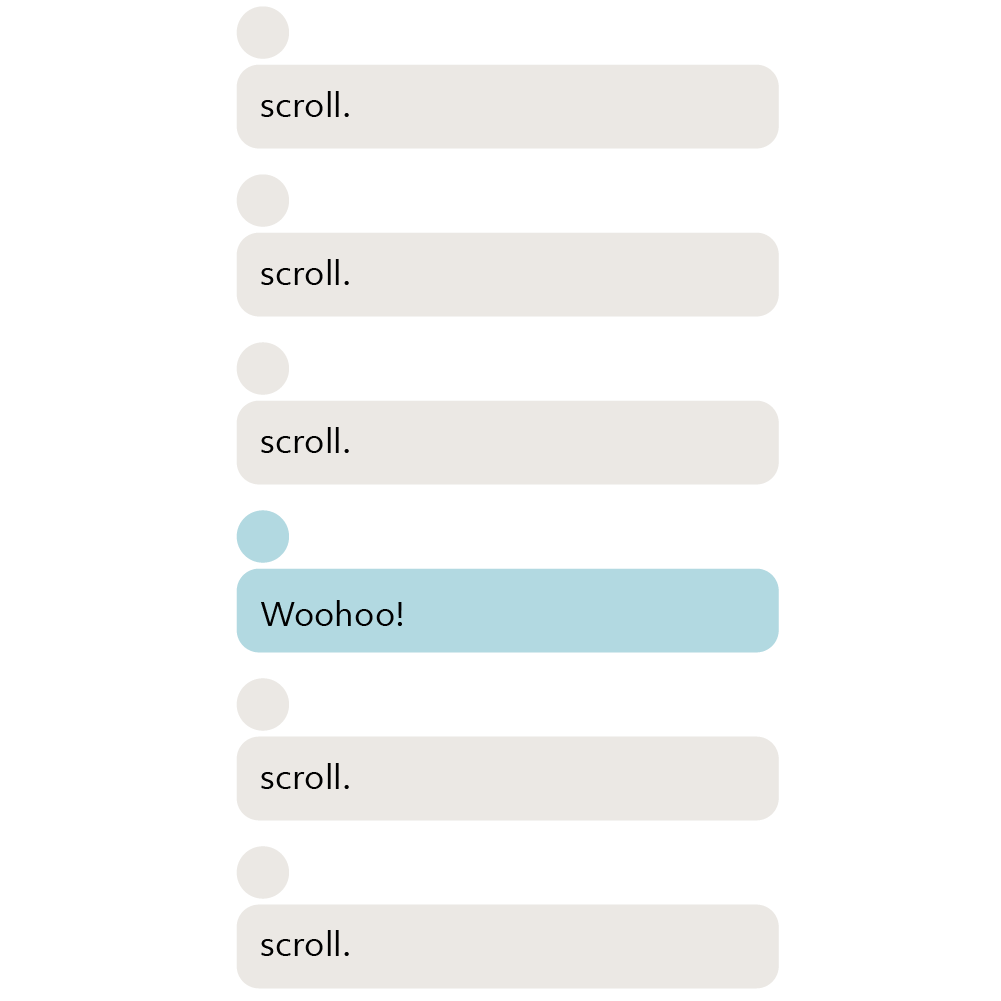
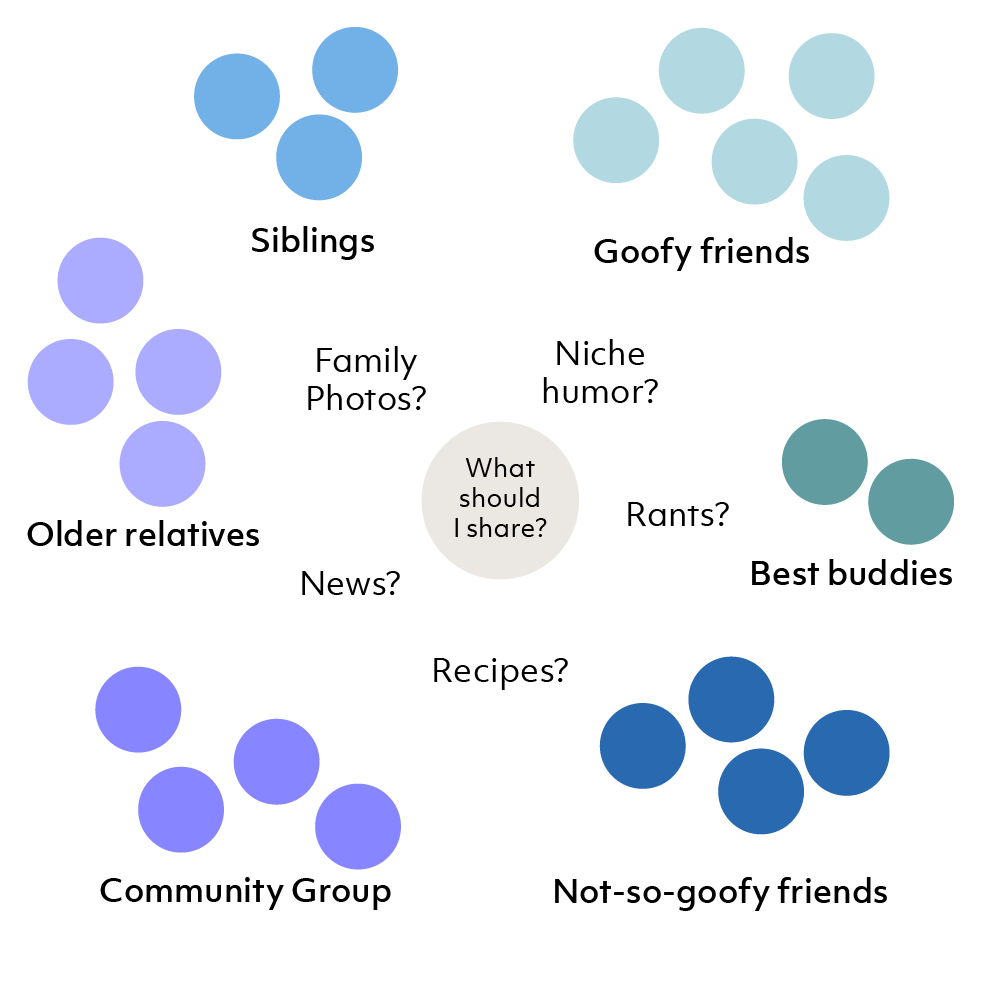
Online Presence
In real life, people have multiple personalities. We act differently around our parents, siblings, and buddies. Most social media tends to scoop all the friends into one or two piles, but sharing content can get awkward if your niche humor isn't appreciated by your parents, or if your pals might see your embarrassing family photos. The usual solution is to make multiple accounts, but that's tedious. Instead, group-making could be the forefront of the application, so posts and feed content can be specified for user-made groups.
Cyberbullying and Annoying Content
Your uncle might be a funny guy, but his passion for controversial current events can be irritating. Rather than completely hiding him, perhaps a solution is the ability to hide specific types of content.
Annoying posts also have a tendency to get out of control with heated arguments, cyberbullies, trolls and spam. Algorithms could be used to monitor and prevent misconduct on the platform, although this would need plenty of data to improve its accuracy.

Planning Solutions
What If?
First, plenty of sketches and thumbnails are drawn to make a general vision of the app, along with notes on how to approach various scenarios, such as where to add error pop ups or what settings should be included.



User Flows
The app should be simple and intuitive, but it should also allow the user to feel in control of the settings and content.

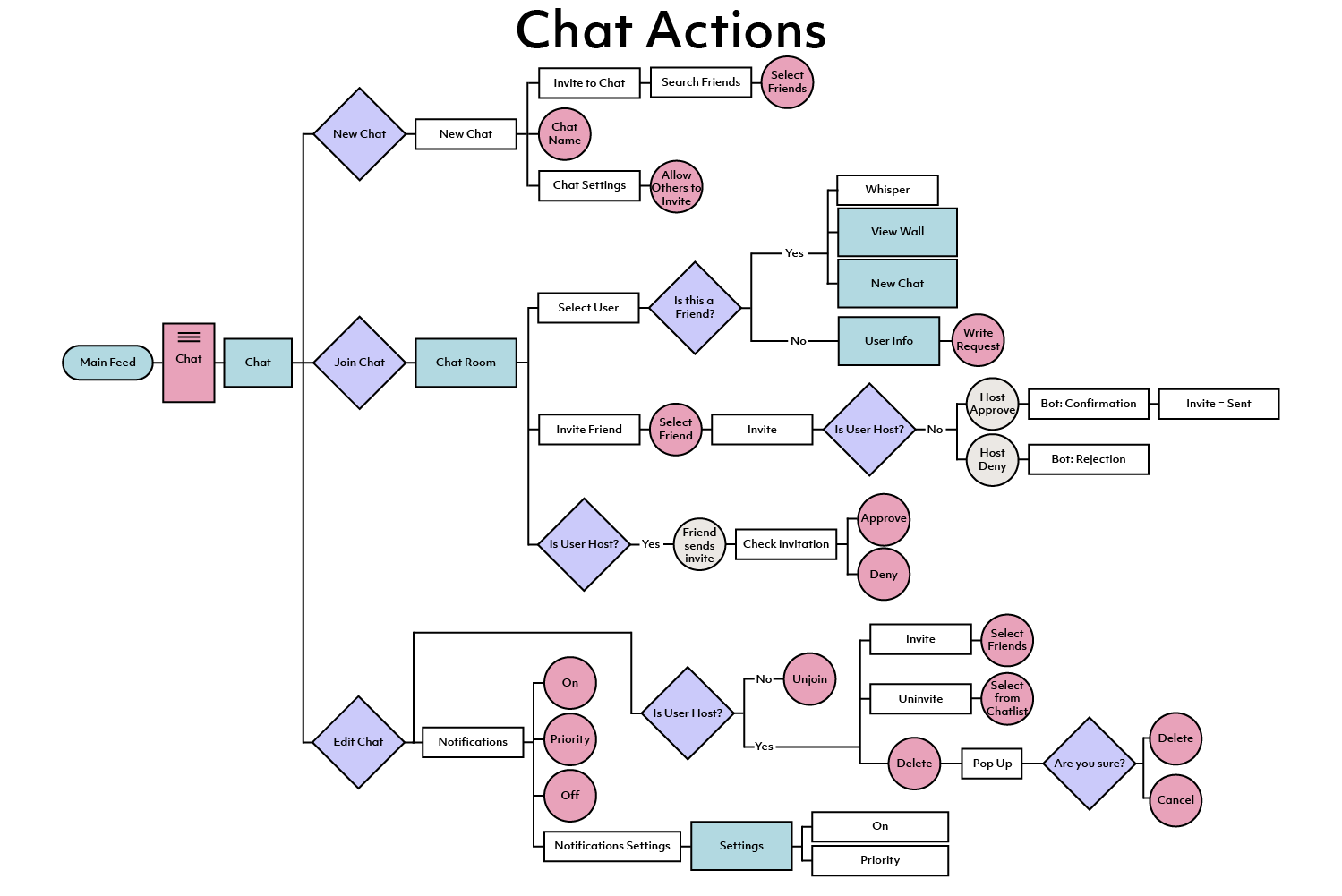

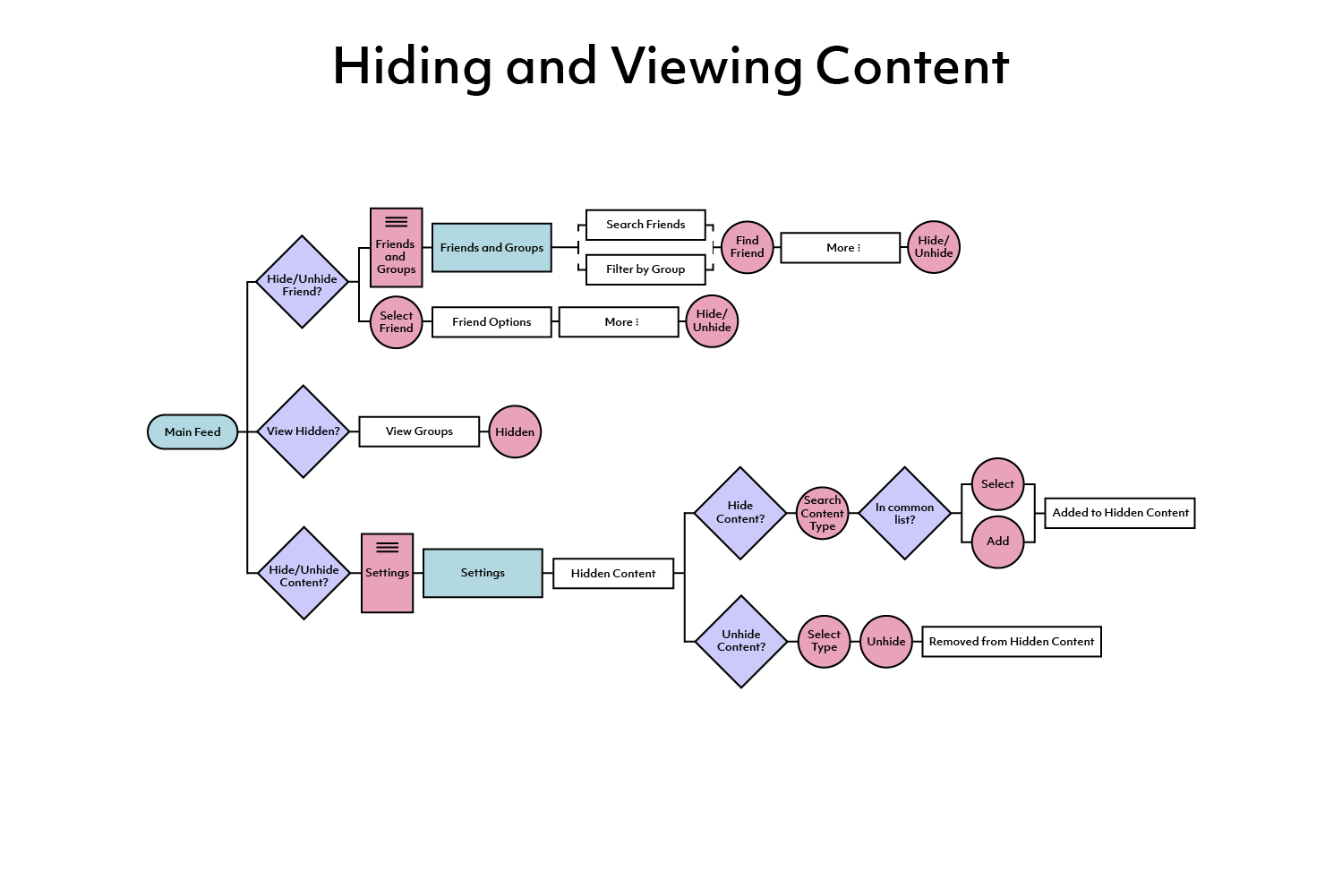
Wireframes
Wireframes are sketched alongside flows to get an idea of how easy or difficult the access to options are.

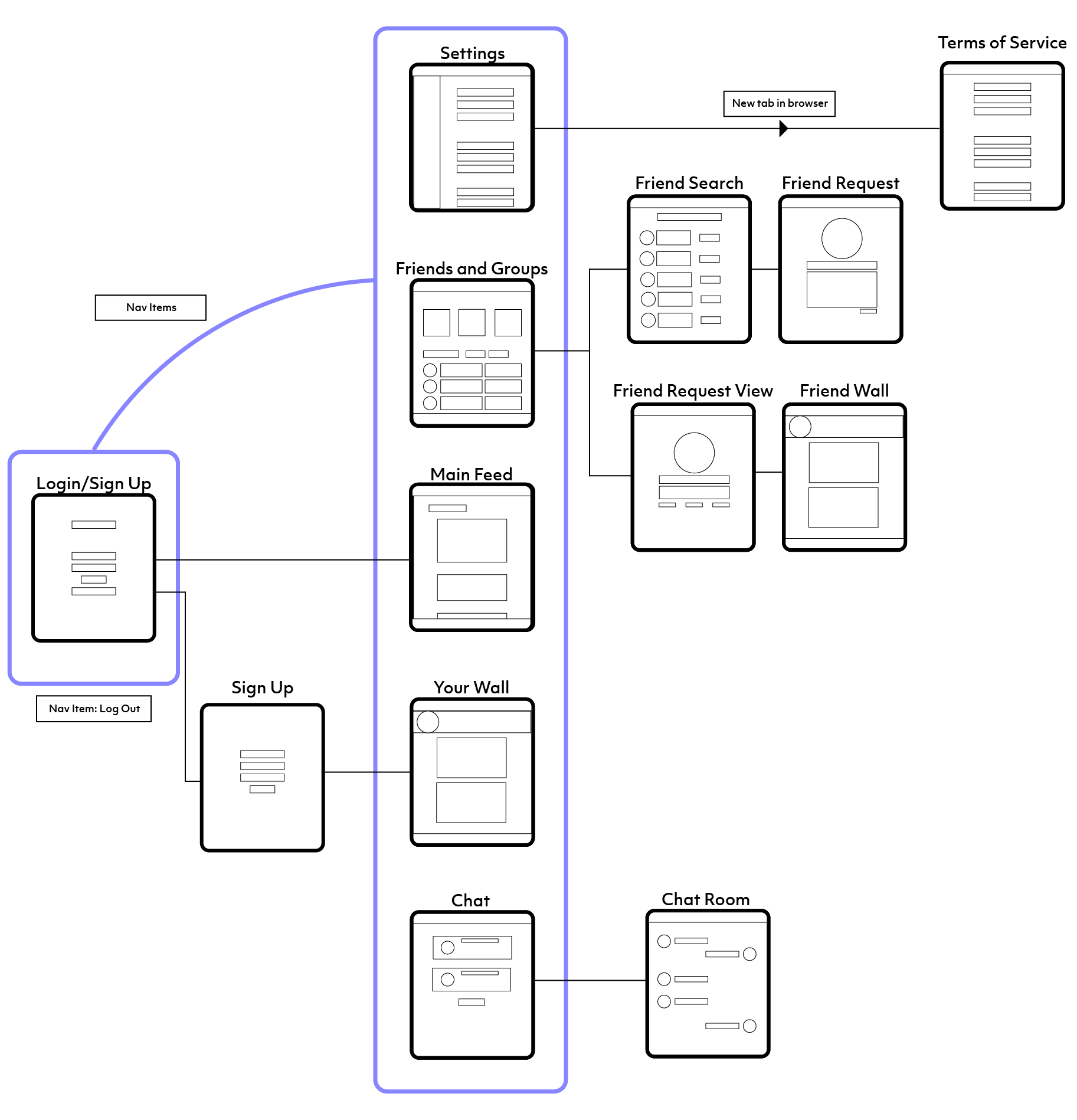





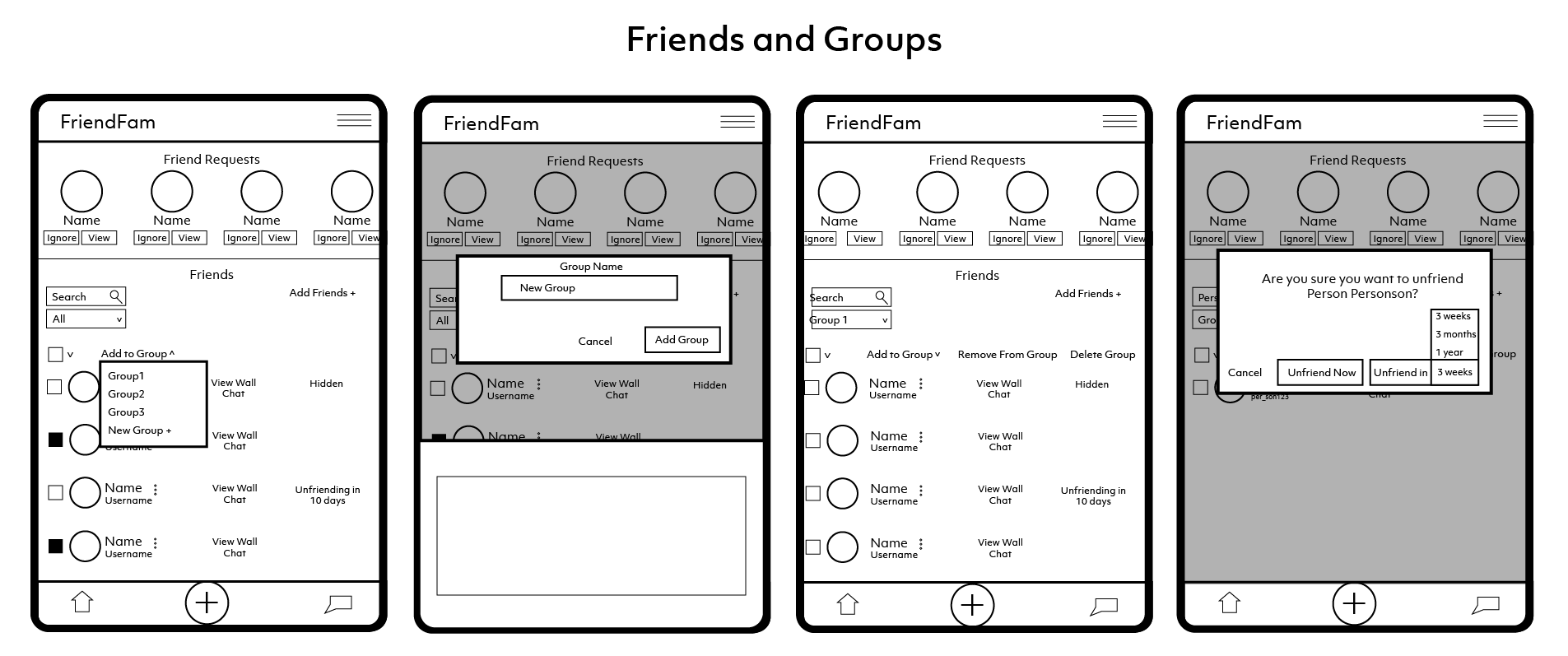
Designing Products
User Stories
To demonstrate the app's functions are the hypothetical users: Mia, Linda, and Chuck.
Mia is a newbie to the app and wants to make groups for her different friend circles.
Linda is Mia's mom, and she has used the app for a while. She hides political content that her old friend, Chuck, posts.
Chuck can get heated with arguments, and the app tries to curb some of that anger.

Mia: The Newbie
Mia is new to FriendFam. Here, she signs up for an account and is guided through customizing her wall.
Mia sends a friend request to her relative, Linda. A pop up shows if it's been approved.
She receives three friend requests. She can add, ignore, and report users.
Mia makes groups from her new friends: My Family, Work Buds, and The Crew.
Grouping is not a mutual process; she chooses how to make her own groups, and her friends cannot see what group they're in.
Mia views her My Family group in the main feed. She comments on Linda's post.
Linda: The General User
Linda is already fairly established in FriendFam. She writes a post and decides who can see it.
Linda can see all of the comments and likes on her post, but this information is hidden to other users.
If Mia isn't friends with Linda's friends, Mia can't see their comments.
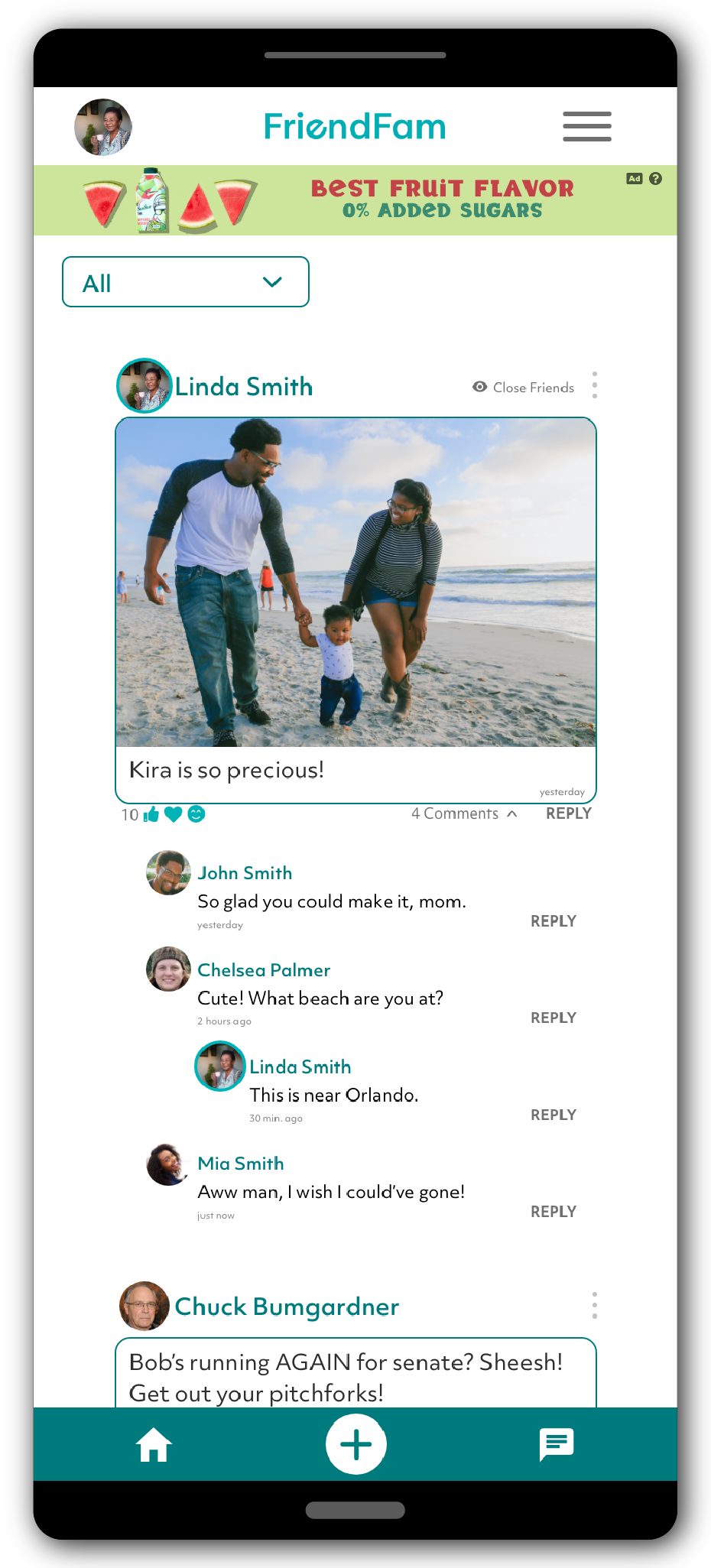
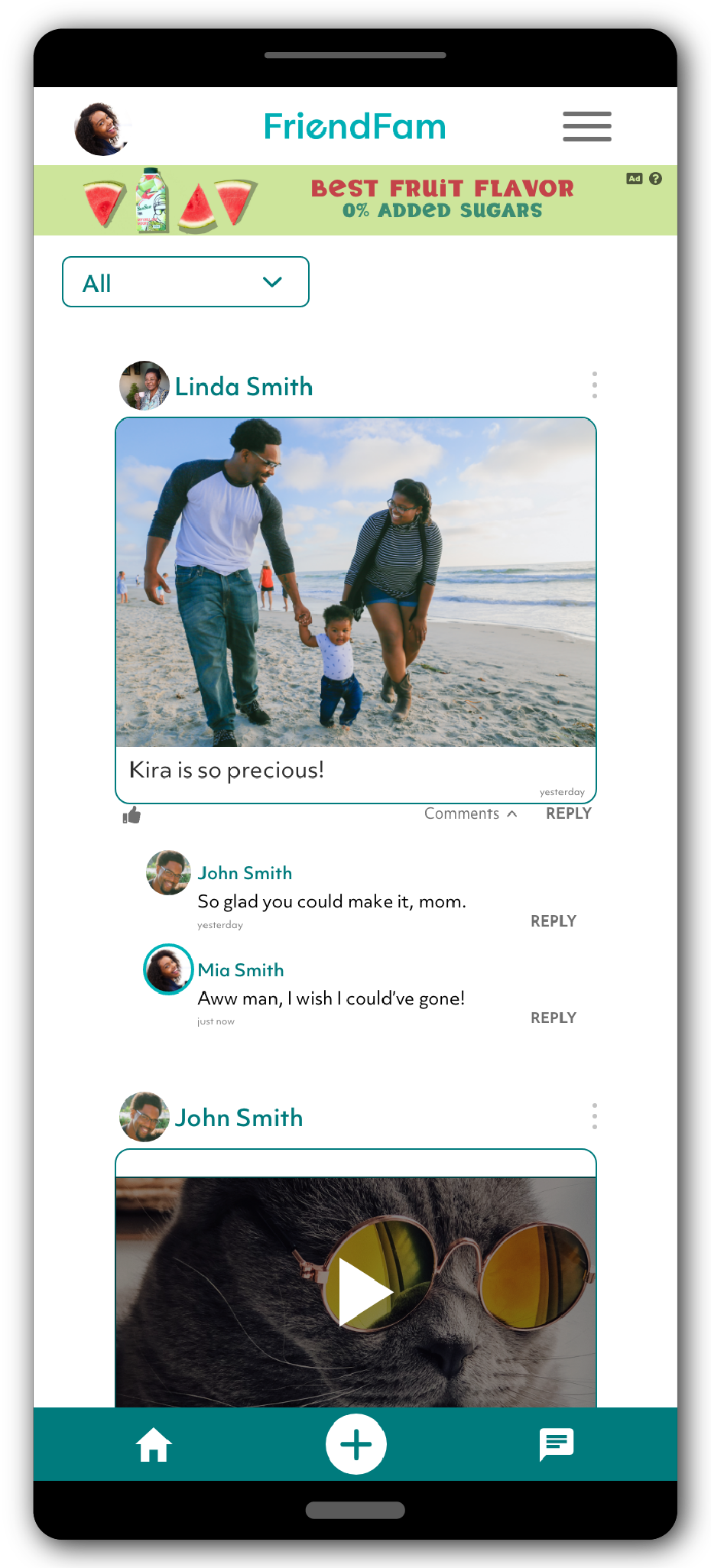
Linda decides to hide a subject. Although she has hidden the subject, she can still easily view all hidden posts. She likes Mia's post.
Chuck: The Pugnacious User
Chuck likes getting into arguments. To prevent a comment war, he is prompted to carry the argument out in a private chat. If a chat still gets a little too heated, a mediator bot can calm down the situation.
Chuck goes to the main chat page to silence notifications for the argument. A couple other chats are shown. Unlike posting, chats can extend to friends of friends (if the host approves the invitation). Idle chats are removed after a period of time.
Chuck decides to unfriend his rival. He chooses to do a "soft unfriend", which gradually reduces the visibility of each other's posts on their feeds through a specified time.
I can't end this on a sad note, though. Chuck decides to cancel the soft unfriend-- after all, their kids are getting married, and he does like his friend's football posts.
FriendFam
FriendFam is an attempt to solve some of the big issues of popular social media platforms by reducing and restricting content to be friends-only, making the friending process a bit more involved to prevent spam-friending, and allowing users to adapt their content for different groups. It is not meant to replace larger platforms like Facebook or Twitter, but it's more of a closer-knit option.
The persons represented are fictitious. Their images are either Creative Commons 0 or artificially generated through thispersondoesnotexist.